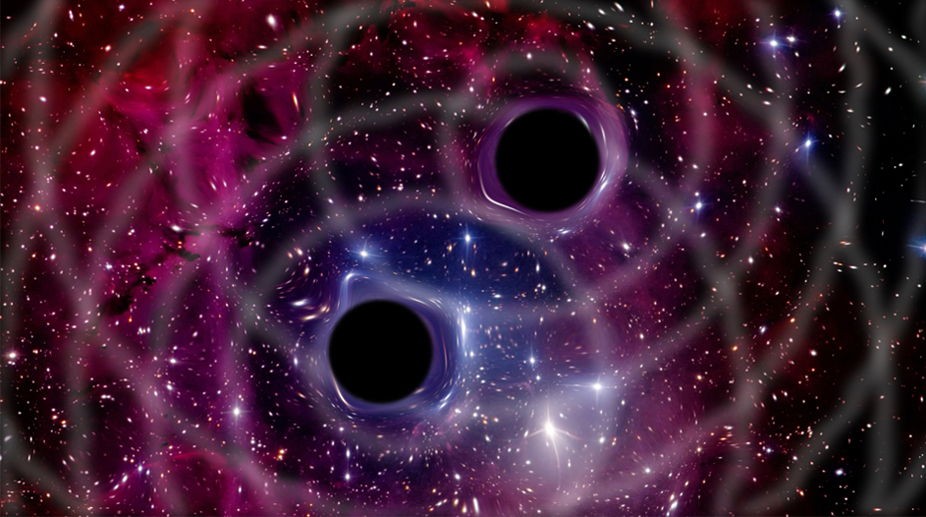Indian astronomers map differential rotation of Sun’s chromosphere
The research, published in the Astrophysical Journal, can help give a complete picture of the Sun's inner workings.

(Photo: Getty Images)
In a major breakthrough, astronomers including one of Indian origin have discovered two supermassive black holes orbiting each other 750 million light years away from Earth – a finding that may help better understand how gravitational waves are formed.
Last year, an international team of researchers detected the existence of gravitational waves, confirming German physicist Albert Einstein's 100-year-old prediction and astonishing the scientific community.
Advertisement
These gravitational waves were the result two stellar mass black holes of about 30 solar masses colliding in space.
Scientists will now be able to start to understand what leads up to the merger of supermassive black holes that creates ripples in the fabric of space-time and begin to learn more about the evolution of galaxies and the role these black holes play in it.
Advertisement
“For a long time, we've been looking into space to try and find a pair of these supermassive black holes orbiting as a result of two galaxies merging,” said Professor Greg Taylor from University of New Mexico in the US.
“Even though we've theorised that this should be happening, nobody had ever seen it until now,” said Taylor.
Researchers have been studying the interaction between these black holes for 12 years.
“When Dr Taylor gave me this data I was at the very beginning of learning how to image and understand it,” said Karishma Bansal, first-author of the study published in The Astrophysical Journal.
“As I learned there was data going back to 2003, we plotted it and determined they are orbiting one another. It's very exciting,” said Bansal.
Using the Very Long Baseline Array (VLBA), a system made up of 10 radio telescopes across the US, researchers have been able to observe several frequencies of radio signals emitted by these supermassive black holes (SMBH).
Over time, astronomers have essentially been able to plot their trajectory and confirm that these black holes are in orbit with one another.
At roughly 750 million light years from Earth, the galaxy named 0402+379 and the supermassive black holes within it, are incredibly far away, but are also at the perfect distance from Earth and each other to be observed.
Bansal said these supermassive black holes have a combined mass of 15 billion times that of our Sun, or 15 billion solar masses.
The unbelievable size of these black holes means their orbital period is around 24,000 years, so while the team has been observing them for over a decade, they have yet to see even the slightest curvature in their orbit.
Continuing to observe the orbit and interaction of these two supermassive black holes could also help us gain a better understanding of what the future of our own galaxy might look like.
Right now, the Andromeda galaxy, which also has a SMBH at its centre, is on a path to collide with our Milky Way. The event that the researchers are studying may occur in our galaxy in a few billion years.
Advertisement